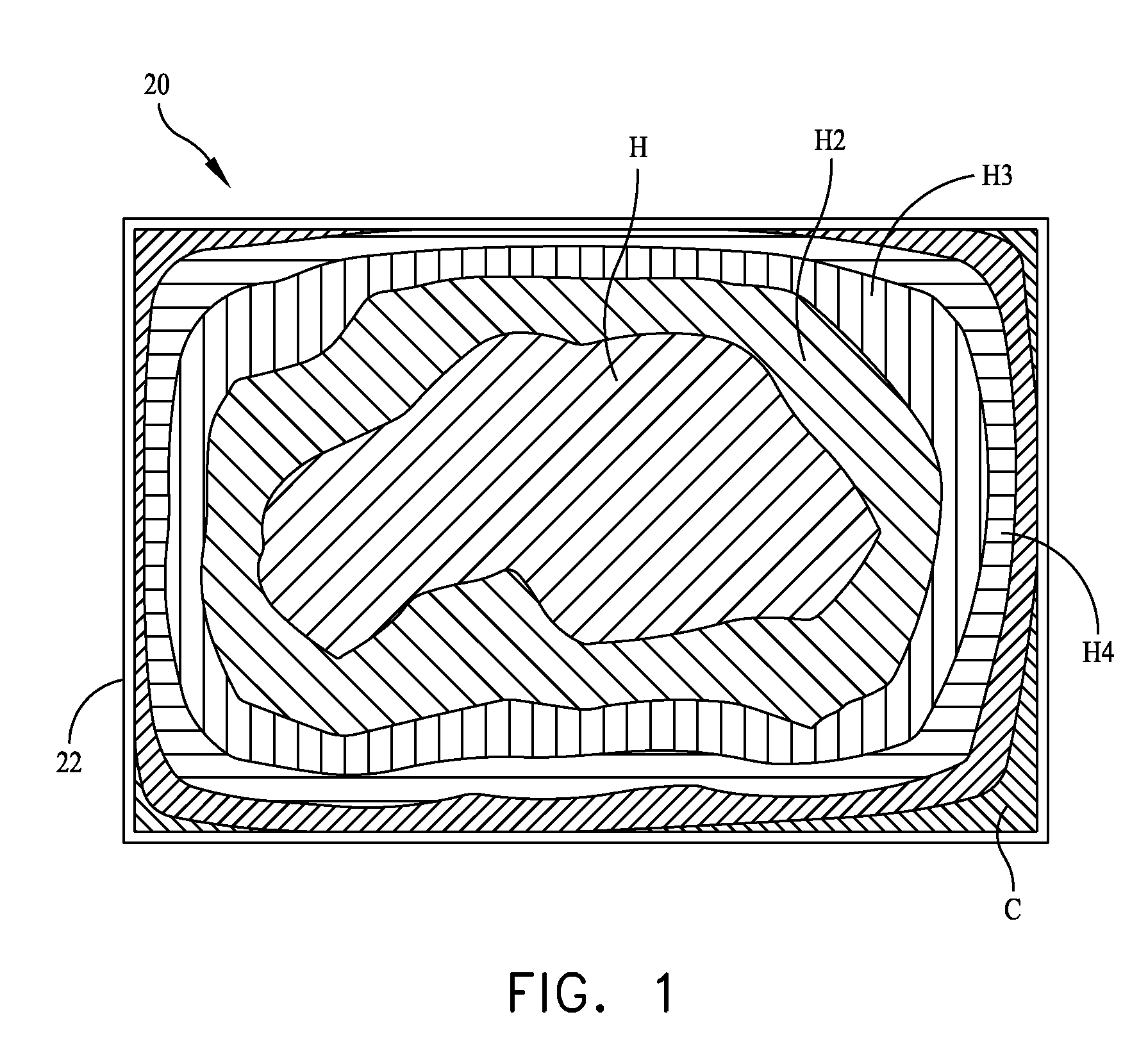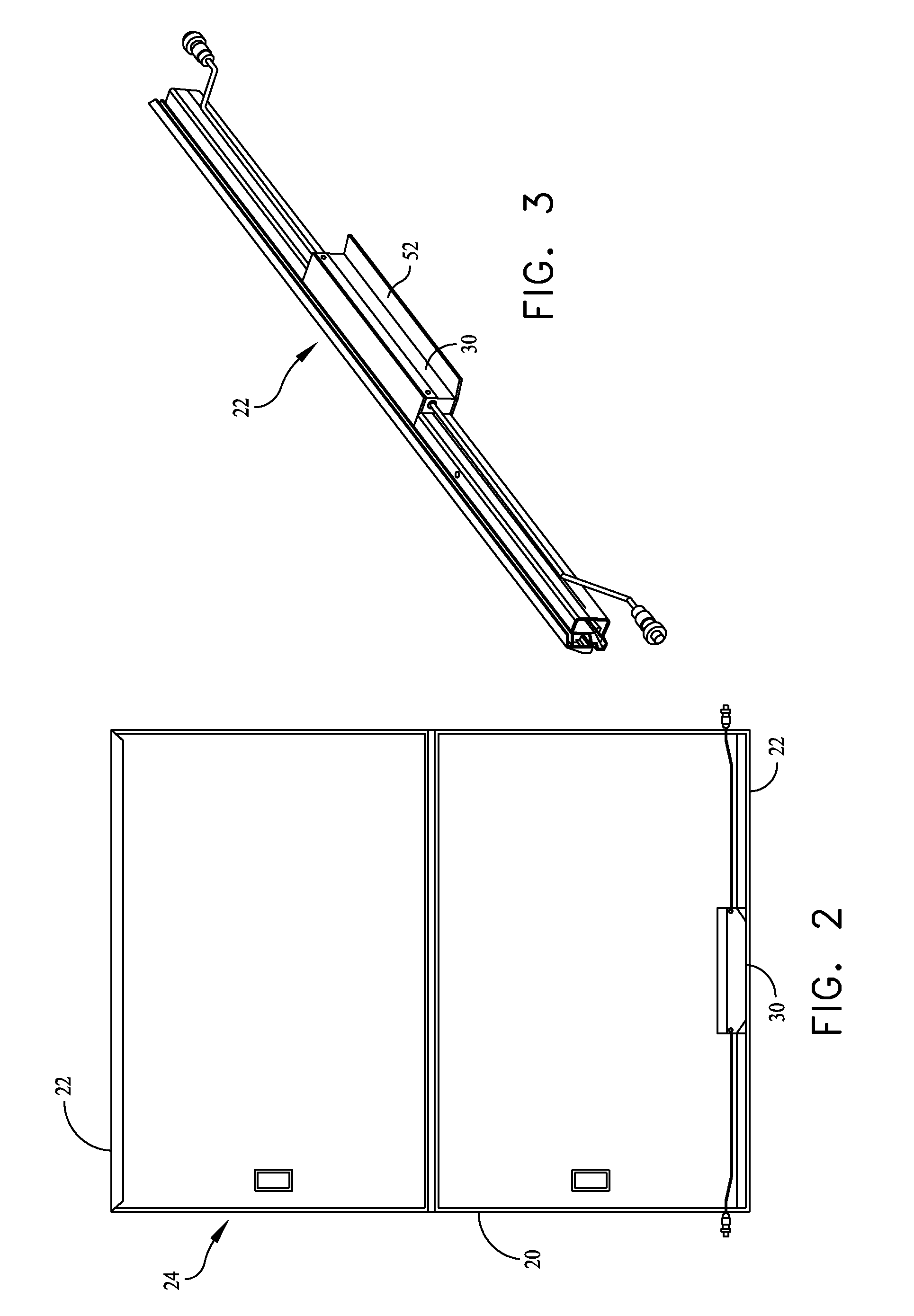Ac photovoltaic module and inverter assembly
a photovoltaic module and photovoltaic module technology, applied in the field of solar electric power systems, can solve the problems of affecting the operation of all inverters in an array of numerous modules, and the relative short life span of the inverter, so as to achieve less internal resistance, less heat, and more reliable and effective operation
- Summary
- Abstract
- Description
- Claims
- Application Information
AI Technical Summary
Benefits of technology
Problems solved by technology
Method used
Image
Examples
Embodiment Construction
[0028]Referring to FIG. 1, it will be seen that a DC photovoltaic module 20 illuminated by sunlight, and in the absence of air flow, will exhibit gradients of heat, with a hottest area H appearing in a generally central area of the module. Extending outwardly from the central area are progressively cooler areas, H2, H3, H4, and a coolest area C at an outermost edge of the module which is typically bounded by a frame 22.
[0029]At sunless times, and particularly at night time, the module 20 can cool to ambient, and below ambient, temperatures with the central area of the module experiencing the greatest temperature drop. Such change in temperature, particularly over an extended time, is conducive to condensation occurring in the module, which can lead to freeze-thaw mechanized stress in the unit, corrosion, and / or loss of insulation resistance. Accordingly, the most beneficial location for an inverter is proximate the frame 22, that is, in an area well removed from the central area of ...
PUM
 Login to view more
Login to view more Abstract
Description
Claims
Application Information
 Login to view more
Login to view more - R&D Engineer
- R&D Manager
- IP Professional
- Industry Leading Data Capabilities
- Powerful AI technology
- Patent DNA Extraction
Browse by: Latest US Patents, China's latest patents, Technical Efficacy Thesaurus, Application Domain, Technology Topic.
© 2024 PatSnap. All rights reserved.Legal|Privacy policy|Modern Slavery Act Transparency Statement|Sitemap



